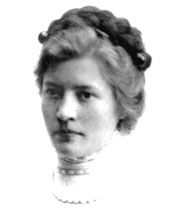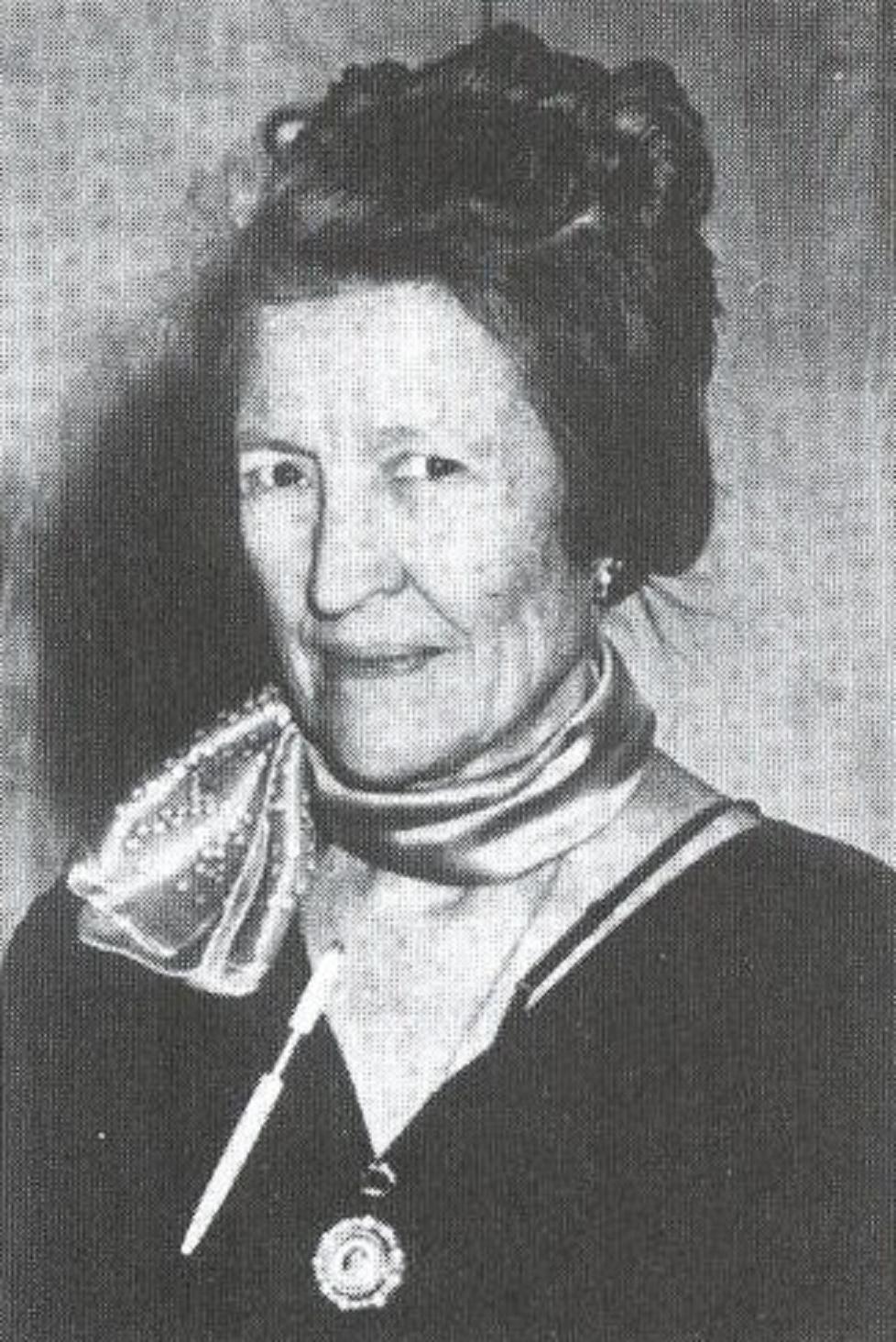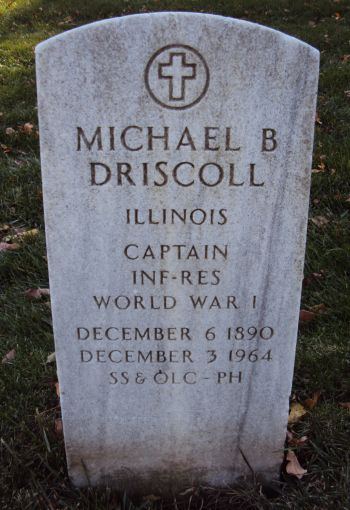She was, known as Miss Aggie or Madame X, an American cryptanalyst during both World War I and World War II. Born in Illinois in 1889, Agnes May Meyer moved with her family to Westerville, Ohio in 1895 where her father, Gustav Meyer, had taken a job teaching music at Otterbein College. In 1909 he donated the family home to the Anti-Saloon League which recently moved its headquarters to Westerville. Meyer attended Otterbein College from 1907-1909. In 1911 she received an A.B. degree from Ohio State University, majoring in mathematics, physics, foreign languages, and music. From her earliest days as a college student, she pursued technical and scientific studies. After graduation, she moved to Amarillo, Texas, where she was director of music at a military academy, and, later, chair of the mathematics department at the local high school. On June 22, 1918, about one year after America entered World War I, Agnes Meyer enlisted in the United States Navy. She was recruited at the highest possible rank of chief yeoman and was assigned to the Code and Signal section of the Director of Naval Communications. Except for a two-year hiatus, when she worked for a private firm, she would remain a leading cryptanalyst for the U.S. Navy until 1949. Her efforts were not limited to manual systems; she was involved also in the emerging machine technology of the time, which was being applied both to making and breaking ciphers. In her first days in the Code and Signal section, she co-developed one of the U.S. Navy's cipher machines, the "CM." In 1923, Agnes Meyer left the navy and joined the fledgling Hebern Electric Code Company as technical advisor. Although Hebern's company ultimately failed, its work in rotor technology would affect machine cryptography for years to come. She returned to the navy in the spring of 1924. In August 1924 she married Michael Driscoll, a Washington, D.C. lawyer. In her thirty-year career, Agnes Driscoll broke Japanese Navy manual codes -- the Red Book Code in the 1920s, and the Blue Book Code in 1930, and in 1940 she made critical inroads into JN-25, the Japanese fleet's operational code, which the U.S. Navy exploited after the attack on Pearl Harbor for the rest of the Pacific War. In early 1935, Agnes Driscoll led the attack on the Japanese M-1 cipher machine (also known to the U.S. as the ORANGE machine), used to encrypt the messages of Japanese naval attaches around the world. At the same time Agnes sponsored the introduction of early machine support for cryptanalysis against Japanese naval code systems. Early in World War II, Agnes Driscoll was engaged in the U.S. Navy's effort against the German naval Enigma machine, with this work being superseded by the US-UK cryptologic exchanges of 1942-43. She worked under Laurance Safford and Joseph Rochefort. Mrs. Driscoll was part of the navy contingent that joined the new national cryptologic agencies, firstly the Armed Forces Security Agency in 1949 and then the National Security Agency in 1952. She retired from Armed Forces Security Agency in 1959. She died in 1971 and is buried in Arlington National Cemetery. In 2000 she was inducted into the National Security Agency's Hall of Honor.
She was, known as Miss Aggie or Madame X, an American cryptanalyst during both World War I and World War II. Born in Illinois in 1889, Agnes May Meyer moved with her family to Westerville, Ohio in 1895 where her father, Gustav Meyer, had taken a job teaching music at Otterbein College. In 1909 he donated the family home to the Anti-Saloon League which recently moved its headquarters to Westerville. Meyer attended Otterbein College from 1907-1909. In 1911 she received an A.B. degree from Ohio State University, majoring in mathematics, physics, foreign languages, and music. From her earliest days as a college student, she pursued technical and scientific studies. After graduation, she moved to Amarillo, Texas, where she was director of music at a military academy, and, later, chair of the mathematics department at the local high school. On June 22, 1918, about one year after America entered World War I, Agnes Meyer enlisted in the United States Navy. She was recruited at the highest possible rank of chief yeoman and was assigned to the Code and Signal section of the Director of Naval Communications. Except for a two-year hiatus, when she worked for a private firm, she would remain a leading cryptanalyst for the U.S. Navy until 1949. Her efforts were not limited to manual systems; she was involved also in the emerging machine technology of the time, which was being applied both to making and breaking ciphers. In her first days in the Code and Signal section, she co-developed one of the U.S. Navy's cipher machines, the "CM." In 1923, Agnes Meyer left the navy and joined the fledgling Hebern Electric Code Company as technical advisor. Although Hebern's company ultimately failed, its work in rotor technology would affect machine cryptography for years to come. She returned to the navy in the spring of 1924. In August 1924 she married Michael Driscoll, a Washington, D.C. lawyer. In her thirty-year career, Agnes Driscoll broke Japanese Navy manual codes -- the Red Book Code in the 1920s, and the Blue Book Code in 1930, and in 1940 she made critical inroads into JN-25, the Japanese fleet's operational code, which the U.S. Navy exploited after the attack on Pearl Harbor for the rest of the Pacific War. In early 1935, Agnes Driscoll led the attack on the Japanese M-1 cipher machine (also known to the U.S. as the ORANGE machine), used to encrypt the messages of Japanese naval attaches around the world. At the same time Agnes sponsored the introduction of early machine support for cryptanalysis against Japanese naval code systems. Early in World War II, Agnes Driscoll was engaged in the U.S. Navy's effort against the German naval Enigma machine, with this work being superseded by the US-UK cryptologic exchanges of 1942-43. She worked under Laurance Safford and Joseph Rochefort. Mrs. Driscoll was part of the navy contingent that joined the new national cryptologic agencies, firstly the Armed Forces Security Agency in 1949 and then the National Security Agency in 1952. She retired from Armed Forces Security Agency in 1959. She died in 1971 and is buried in Arlington National Cemetery. In 2000 she was inducted into the National Security Agency's Hall of Honor.
Bio by: The Silent Forgotten
Gravesite Details
Widow Of Driscoll, Michael
Family Members
Sponsored by Ancestry
Advertisement
Explore more
Sponsored by Ancestry
Advertisement








